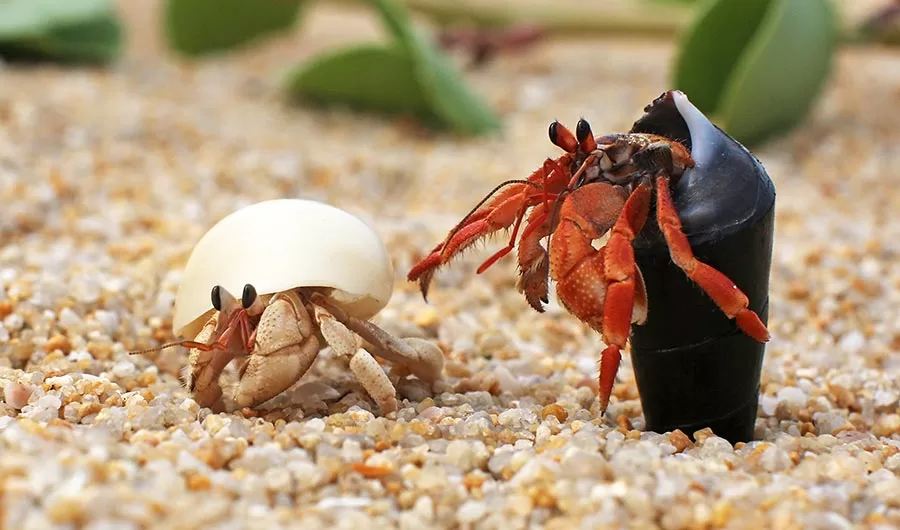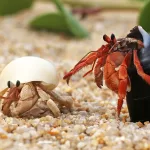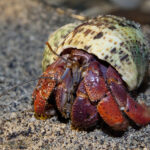Choosing the Right Hermit Crab Species for Your Tank
Hermit crabs are fascinating creatures known for their unique habit of occupying discarded shells for protection. While they all share this characteristic, hermit crabs come in a variety of species, each with its own distinct traits and requirements. When considering adding hermit crabs to your tank, it’s essential to choose species that are well-suited to your setup and care abilities. In this article, we’ll explore different hermit crab species commonly kept as pets and provide guidance on selecting the right ones for your tank.
Understanding Hermit Crab Species
Before diving into specific species, it’s crucial to understand the general categories of hermit crabs commonly available in the pet trade:
- Land Hermit Crabs: These are the most popular species kept as pets. Land hermit crabs, such as the Caribbean hermit crab (Coenobita clypeatus) and Ecuadorian hermit crab (Coenobita compressus), require a terrestrial habitat with access to both land and water areas.
- Marine Hermit Crabs: Unlike land hermit crabs, marine hermit crabs, like the Blue-legged hermit crab (Clibanarius tricolor), inhabit saltwater environments. They are often utilized in reef aquariums to control algae growth.
- Freshwater Hermit Crabs: While less common, freshwater hermit crabs, such as Clibanarius fonticola, inhabit freshwater habitats. They have specific environmental requirements and are not as widely kept as their saltwater and land counterparts.
Factors to Consider When Choosing Hermit Crab Species
When selecting hermit crab species for your tank, consider the following factors:
- Tank Setup: Determine whether your tank is suitable for land, marine, or freshwater hermit crabs. Land hermit crabs require a mix of sand and coconut fiber substrate, along with access to freshwater and saltwater pools. Marine hermit crabs need a saltwater environment with adequate hiding spots and spaces to forage.
- Size: Different hermit crab species vary in size, with some reaching larger proportions than others. Consider the available space in your tank and choose species that can thrive comfortably without overcrowding.
- Behavior: Research the behavior and social dynamics of each species. Some hermit crabs are more solitary, while others prefer living in groups. Understanding their social needs will help you create a harmonious tank environment.
- Dietary Requirements: Hermit crabs have diverse dietary preferences, ranging from omnivorous to herbivorous diets. Ensure that you can provide appropriate food sources for the species you choose.
- Availability and Legality: Check the availability and legality of hermit crab species in your region. Some species may be restricted due to conservation concerns or invasive species regulations.
Popular Hermit Crab Species for Tanks
Here are some popular hermit crab species commonly kept in tanks:
- Caribbean Hermit Crab (Coenobita clypeatus): Known for their vibrant coloration and large size, Caribbean hermit crabs are a favorite among enthusiasts. They thrive in warm, humid environments with access to both land and water.
- Purple Pincher Hermit Crab (Coenobita perlatus): Recognizable by their distinctive purple pinchers, these hermit crabs are prized for their striking appearance. They require similar care to Caribbean hermit crabs and are well-suited to community tank setups.
- Blue-legged Hermit Crab (Clibanarius tricolor): Popular in marine aquariums, Blue-legged hermit crabs are valued for their algae-eating habits and peaceful demeanor. They help maintain a clean tank environment but may compete with other tank inhabitants for resources.
- Ecuadorian Hermit Crab (Coenobita compressus): Smaller in size compared to Caribbean hermit crabs, Ecuadorian hermit crabs are ideal for smaller tank setups. They thrive in high-humidity environments and enjoy burrowing in soft substrate.
Conclusion
Choosing the right hermit crab species for your tank is crucial for creating a thriving and harmonious habitat. By considering factors such as tank setup, size, behavior, dietary requirements, and availability, you can make an informed decision that meets both your needs and the needs of your hermit crab pets. Whether you opt for land, marine, or freshwater hermit crabs, providing appropriate care and attention will ensure a rewarding experience for both you and your crustacean companions.









